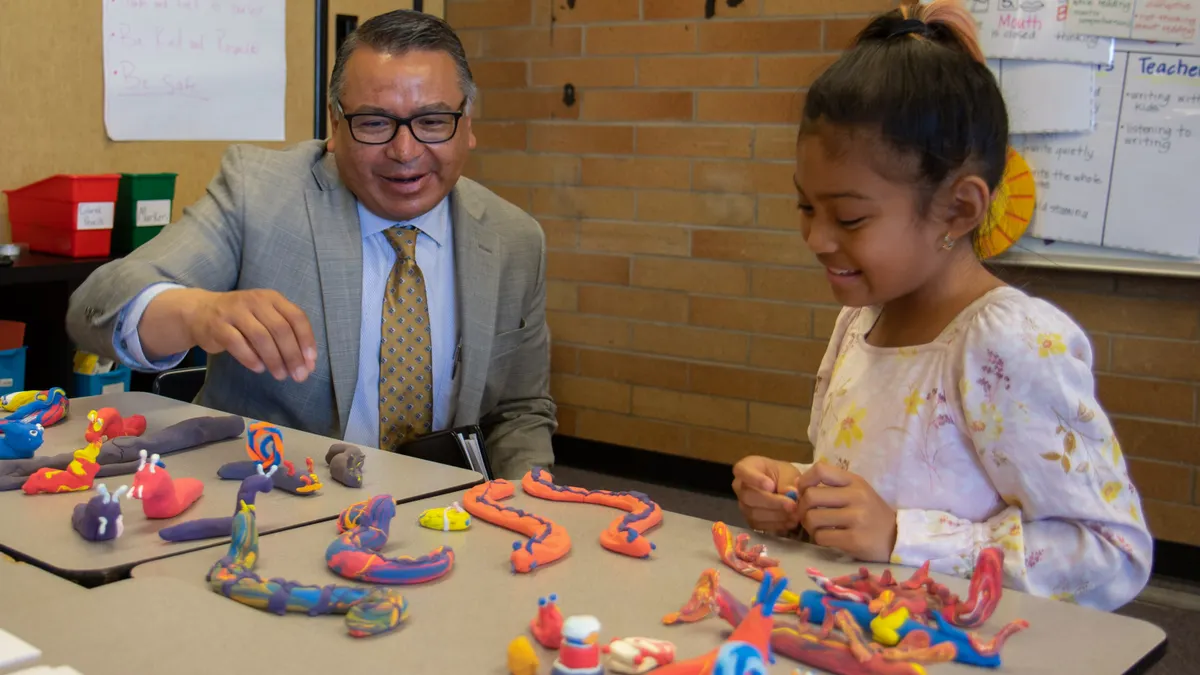Karen Niemi is CEO of the Collaborative for Academic, Social, and Emotional Learning, which recently published a policy brief detailing areas where ARP dollars could most effectively bolster the SEL implementation.
The COVID-19 pandemic may have been a disaster for schools across the country — but it’s also a once-in-a-lifetime opportunity American education has been waiting for. The American Rescue Plan is a $123 billion investment into our education system, and with funds specifically earmarked for equity, it has the power to transform our schools.
Opportunities like this call for vision, strategy and courage, but after the year educators have experienced, with many burned out and struggling to safely reopen schools, it’s no wonder trying to create a plan to spend ARP funds is one more thing keeping them up at night. We’ve heard from district and state leaders that trying to plan for five years in advance is a challenge when they don’t even know what the next few months hold. And while we’re more than empathetic, we also know what’s at stake and why we need to get this right.
By right, we mean making systemic changes that are only possible with the kind of funding now available. Right means finally creating learning environments that mitigate teacher stress, support students across all aspects of their development, and forge connections between schools, families and communities — because it truly takes a village to raise a child. And while throwing money to patch the holes in the current system seems easy and is tempting, it’s only a temporary solution.
The guideline we at the Collaborative for Academic, Social, and Emotional Learning share with educators on spending APR funds is the 20:80 rule — invest 20% of your funds on immediate priorities and 80% on long-term, systemic changes. The most powerful tools for creating systemic changes are those developed and used in the implementation of social and emotional learning.
Over 20 years of evidence-based research and continuous improvements in practice have shown SEL has the power to provide precisely what teachers need to lead, what students need to thrive, and what schools need to be exciting hubs of learning and growth for students, families and communities.
Many examples of immediate and long-term investments in SEL can serve as analogues of what can work with ARP dollars. For instance, Oakland Unified School District used teacher stipends this past year to connect students with educators and re-engage chronically absent students. The district is also building up to this fall’s “restorative restart,” where educators and staff will focus on strengthening the educator-student relationships affected by online learning, including scaling up professional learning and programming around mitigating trauma and mental health.
These kinds of investments make perfect sense now, because SEL can help address the traumas and hardships of the last year while at the same time creating a sustainable foundation for strengthening teaching and learning for the future. For example, the California Department of Education has made SEL a priority statewide, and districts across the state are investing in student and teacher counseling, as well.
Meanwhile, Chicago Public Schools is planning to invest in both immediate and long-term SEL infrastructure with ARP dollars, including establishing teams focused on supporting student mental health and building staff capacity to promote SEL and support staff wellness. This is our chance to invest in programs and practices that pay off not just one or three years from now, but for decades to come.
And the evidence is abundant that this investment will pay off. We know SEL translates into proven outcomes for students and schools. Research shows investment in SEL-focused professional development that supports educators and helps adults develop meaningful relationships with students can positively improve a school’s climate and culture. And when paired with evidence-based SEL programs selected to address the unique local needs of a school and community, everything from teacher satisfaction to student outcomes rises.
The good news is the experts who can speak most reliably about what is needed are within arm’s reach. Students, teachers and families can articulate their priorities and ensure district priorities fully reflect those of their community.
For example, this spring Cleveland Metropolitan School District held interviews and focus groups with hundreds of stakeholders for input on what should be prioritized for return-to-school plans post-pandemic, held a public virtual town hall, and developed a survey to identify stakeholders’ highest priorities. This extensive feedback will also help inform their ARP plan and ensure district priorities fully reflect their community.
Creating (and sustaining) feedback loops that help districts understand what students and families truly value may seem daunting, but the payoff is the education system we’ve all wanted for so long.
Our budgets reflect our values. Using ARP funds to integrate SEL throughout schools and districts in partnership with students, families and community is what “building back better” truly means for America.


















